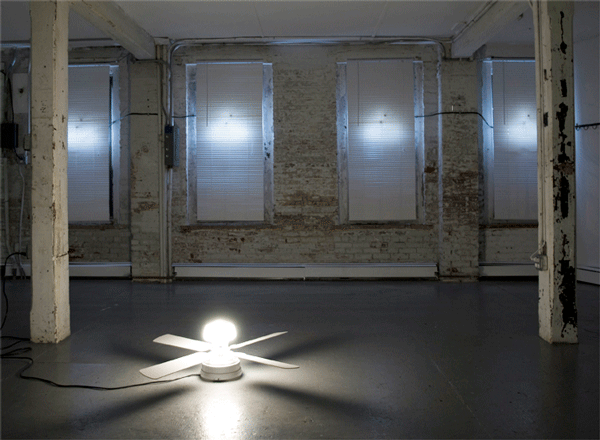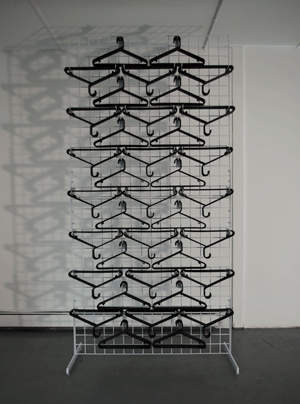-
Basin at Charlie Horse
by Alice Gregory April 7, 2010

When thinking about contemporary art and its almost unanimous interest in commercial and domestic objects, it takes restraint not to rely on William Carlos Williams’s now-tired phrase “No ideas but in things.” But the work in Basin, the current exhibition at Charlie Horse Gallery in South Williamsburg and the first solo show for Brooklyn-based artist Charles Harlan, is obsessed — appropriately, somehow — with the transcendental properties of things. Like Emanuel Swedenborg, the 18th century Swedish scientist and Christian mystic who believed that natural objects symbolized higher realities, Harlan imbues commercial and industrial products with a sort of vague spirituality. Explaining his practice , he says: “I try to capture the moments in which I identify with objects outside of myself.”
With this week’s release of the Apple iPad, one more totem of taste and self-worth – the book – has been demoted, most likely for good. But unlike the dog-eared tomes we used to carry around, annotate, and quote from, Harlan’s objects are abandoned. They were never meant as markers of identity, chosen instead for their forlorn status as tokens of “nothing personal.” By listening for patterns and signals from the everyday panoramas of awnings, ceiling fans, and neon signage, Harlan draws correspondences between non-art objects and art-art reactions.

The show’s title, ‘Basin,’ comes from the name of one of many dumpster companies that service municipal New York. Dumpsters – ubiquitous but unseen – are, for whatever reason, marked by enigmatic inscriptions: “Liberty Ashes,” “Avid,” “Stallion,” “Viking,” “Imperial,” “Tiffany,” “King’s,” “Royal,” “Crown,” “Castle,” “Amanda,” “Rose,” “Atlas,” “Hercules.” The romance and heraldry of these brand names is of the sort of irony best left to Joan Didion. To read these alien messages – tragic, and oh-so American – is to be confronted by signals both familiar and foreign. A Basin dumpster marks the gallery’s entrance, a detail that had to be pointed out to me, which, perhaps, is the point.
Despite the aircraft gray interior of the gallery, light and windows play a central role in communicating to those outside. Above the dumpster, a row of four windows are illuminated with the milky glow of neon hangers, one-to-one copies of plastic hangers, fabricated in Chinatown. Neither art nor advertisement – or perhaps both – neon, invented in the 1920s during the emergence of the middle class, was first associated with shopping and commerce and only later appropriated as an art material. Harlan seems more interested in neon’s anachronistic connotations than in its contemporary ones.
The work is mostly kept to the peripheral of the gallery space, with a set of Venetian blinds hanging on a windowless wall and an awning, inverted and propped, luminescing a steely radiance, like the hatch of a spaceship. Central though, in the middle of the room, a lit Harbor Breeze ceiling fan whirls like a centrifuge. At the show’s opening at least, viewers seemed to collect around it unconsciously, as though it were a hearth. In the wrong state of mind, these products, only slightly altered– perhaps they could be altered more? – might depress or seem like paeans to a neglected world. But there’s warmth here nevertheless, and because of this fan playing campfire, the drabness dissipates.

